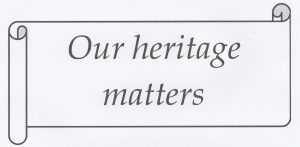![]()

Welcome to the website page exploring the history of Lurgashall Parish
The Archive room at the Village Hall is next open to visitors on Wed 31st JULY and Wed 14th and 28th AUGUST, 2.30 – 5pm. Contact: archive@lurgashallvillagehall.org
Contact: archive@lurgashallvillagehall.org
80 years ago….
A summer play by some pupils of Lurgashall school

This lovely photo has recently been kindly donated to the Archive by Jill Sirett. We think it dates from about 1944 and shows some of the Lurgashall School pupils dressed up for their summer end-of-term production.
Jill has identified the three boys standing in the middle as, from left, Leo Court, evacuee Paul Lowe, and in the cap, Stan Coombes. The little girl crouching in the front, second from left, is Ethel Aylward, Anna Wilson’s elder sister who died earlier this year, aged 89.
If you can name any of the other children in the photo, the Archive would be pleased to hear from you – see above for the email address.
![]()